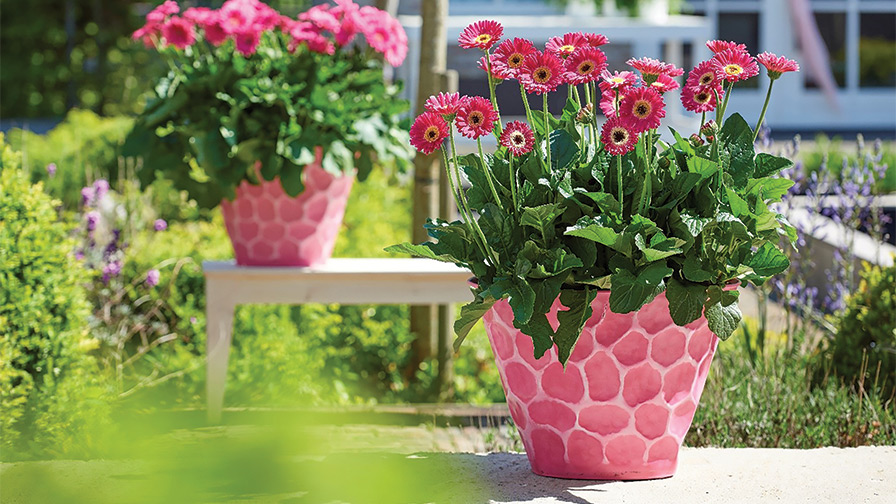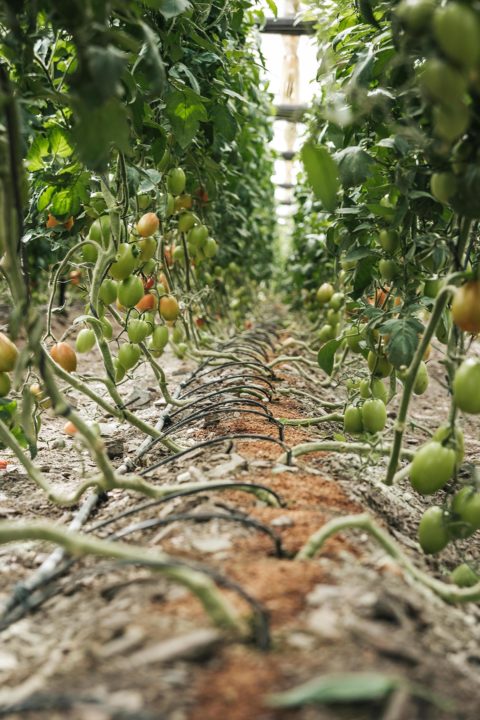Growing Tips for Garvinea Gerbera Daisy From Costa Farms
 Gerberas are great potted plants that are easy for consumers to grow successfully in their gardens. Costa Farms has worked closely over the years with Florist Holland, the breeder of Garvinea gerberas.
Gerberas are great potted plants that are easy for consumers to grow successfully in their gardens. Costa Farms has worked closely over the years with Florist Holland, the breeder of Garvinea gerberas.
“They perform very well for us,” says Donald W. Rogers, Grower and Manager at Costa Farms. “We grow them 12 months of the year, and they continue to gain volume and strength and consumer support in the summer as they perform well this time of year.”
Costa Farms grows gerberas in full-scale production and for multiple programs. Water management is a key factor, Rogers says, as overwatering can cause the development of root rot diseases.
Furthermore, he says allowing plants to dry down too far into a hard wilt can cause a reverse effect with root issues like Pythium. Fungicides are used to keep these issues in check. It is best to water thoroughly each time to avoid salt build up when growing in containers, as well.
Gerberas like high-light levels to penetrate the crown and produce many flowers, Rogers says. Although pinching is not necessary, it is important to remove spent flowers throughout growing to avoid bacterial issues on the leaves. Selling the plants early, with three to five flowers, is recommended to avoid this problem. Gerbera also prefer warmer climates, Rogers says, so they work well for spring into fall production for southern growers, but could limit northern growers to a shorter growing season.
Rogers says a good fertilization program is needed to keep gerberas performing well, as they will become stressed quickly when running out of the proper nutrients. Incorporate a slow-release fertilizer into your soil mixing program; soluble fertilizers can provide success, as well. Once you work out the best fertilizer and water management programs to fit your specific production program, Rogers says there aren’t likely to be any other special production needs.
Rogers’ Recommendations for Growing Gerbera Successfully
Fertilization: Use a slow-release fertilizer incorporated into the soil. Soluble fertilizers also work well.
Propagation: Begin with Stage 3 tissue-culture plants from a supplier and create starter liners.
Plant Growth Regulators: The plants respond well to B-Nine and paclobutrazol to control flower stretch.
Pinching: None required, just remove spent flowers as necessary to reduce bacterial issues on leaves.
Light: High light is needed for best performance and flowering.
Growing Media: Use a media that drains well and can easily maintain plants through wet and dry cycles.
Irrigation: Overhead watering or drip irrigation works well. Do not keep them saturated or allow a hard wilt.
Pests and Disease: The biggest issues are with two-spotted mites and thrips. A biological program approach to control these has proven to work well.
Planting/Scheduling: Plan on a 10-week finish time in production after the crop has been planted in its final pot.
Learn more about Garvinea Gerbera at CostaFarms.com and FloristHolland.com.










